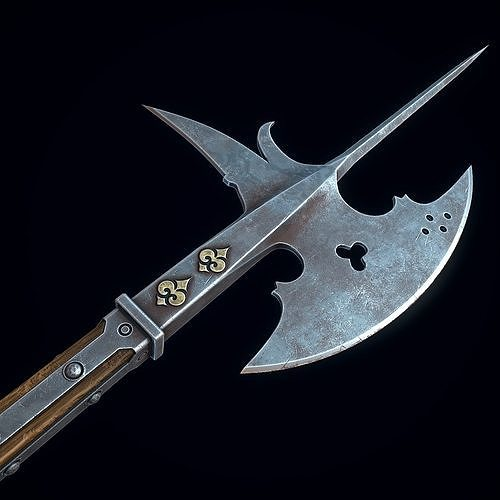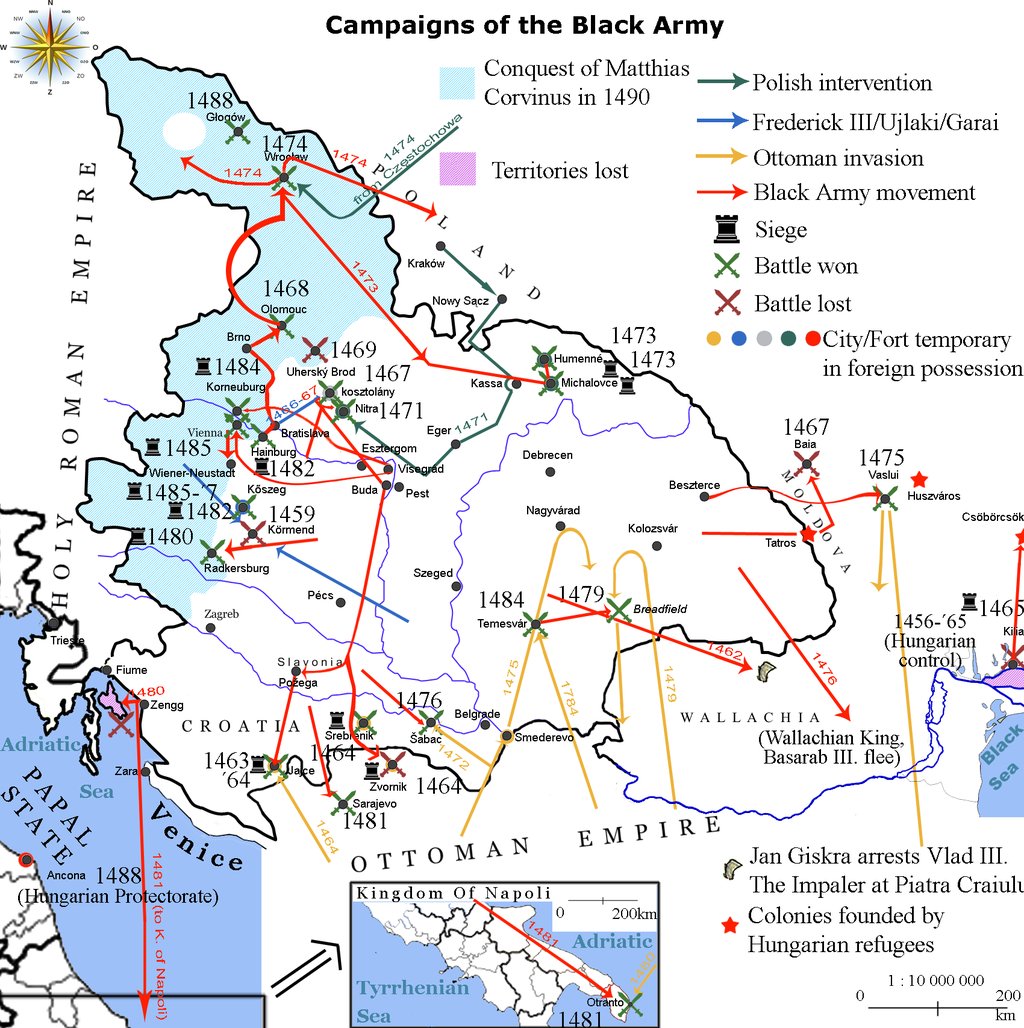The Black Army of Hungary:
This band of mercenaries were one of the most sought after and efficient mercenary armies of the late Middle Ages. These men would play a pivotal role in Hungarian history against the encroaching Ottoman Empire.
Let's go 🧵 https://t.co/skXrX5a5CRtwitter.com/i/web/status/1…

This band of mercenaries were one of the most sought after and efficient mercenary armies of the late Middle Ages. These men would play a pivotal role in Hungarian history against the encroaching Ottoman Empire.
Let's go 🧵 https://t.co/skXrX5a5CRtwitter.com/i/web/status/1…

The Black Army of Hungary was founded in 1458 and personally employed by King Matthias Corvinus after his ascension to the throne of Hungary following the death of his father John Hunyadi. 

Corvinus was inspired on the idea of the professional mercenary army because of his juvenile readings about the life of Julius Caesar.
Corvinus would take the establishment of the hussars, the light cavalry, which harassed the enemy, raided supply lines, and did reconnaissance.
Corvinus would take the establishment of the hussars, the light cavalry, which harassed the enemy, raided supply lines, and did reconnaissance.

King Matthias Corvinus sought to strengthen his position and centralize power in his kingdom.
To achieve this, he raised a personal army of mercenaries, which eventually became known as the Black Army whom many believe is due to their distinctive black armor and clothing.
To achieve this, he raised a personal army of mercenaries, which eventually became known as the Black Army whom many believe is due to their distinctive black armor and clothing.

The Black Army employed men from many different countries including Czechs, Germans, Serbs, and Hungarians, as well as Hussite mercenaries from Bohemia.
These men were veterans of previous conflicts, and would be highly experienced warriors.
These men were veterans of previous conflicts, and would be highly experienced warriors.

Corvinus noted the importance of firearms in warfare. In his army, Corvinus had every 4th soldier carry an arquebus. Medieval gunpowder was expensive and this was as much the Black Army could afford.
They arquebus would prove highly effective in the success of the Black Army.


They arquebus would prove highly effective in the success of the Black Army.


In their beginning, the Black Army had around 6,000 - 8,000 mercenaries. By the arrival of the 1480s this number was around 15,000 to 20,000 soldiers. 

A notable and pivotal piece of the army was the heavy cavalry. Heavily armored knights on horseback who would strike enemies by charging into their formations, one important battle involving the Black Army's heavy cavalry was the Battle of Breadfield in 1479. 

On October 9th, 1479 the Ottoman Empire would enter Transylvania which was land belonging to the Kingdom of Hungary. They began raiding market towns, villages and homesteads taking Hungarians, Vlachs, and Saxons captive. 

On October 13, the Ottomans would set up their camp in the Breadfield (Kenyérmező) region. The Ottomans were obliged to this campaign by the Wallachians who aided them with about 1,000 to 2,000 soldiers. (Art by Zalan Kertai). 

Stephen V Báthory waited until the Turks got exhausted from marching and raiding, he would attack them on October 13.
The forces of the Hungarians were about 12,000 to 15,000 soldiers. Ottoman forces estimated to be around 30,000 soldiers.
The forces of the Hungarians were about 12,000 to 15,000 soldiers. Ottoman forces estimated to be around 30,000 soldiers.

The battle commenced in the afternoon. Both armies consisted of 3 columns. Paul Kinizsi, a war hero and general in the Black Army, charged against the Turks with the Hungarian heavy cavalry.
Kinizsi would move laterally with his cavalry and smash into the Turkish ranks.
Kinizsi would move laterally with his cavalry and smash into the Turkish ranks.

After the charge, the heavy cavalry massacred the Turks and those who survived would flee into the surrounding mountains. Ottoman commander Ali Bey was forced to retreat and the battle was won by the Hungarian forces. 

Estimated casualties of the battle are estimated to be about 3,000 for the Hungarians and about 5,000 to 9,000 Ottomans, and 1,000 for the Wallachians. The Black Army's heavy cavalry proved pivotal in this victory, and Kinizsi was the hero of the day. 

The Black Army had a wide arsenal of equipment.
The heavy cavalry would use primarily lances, but also swords, axes, flanged maces and more.
Many more weapons used in the army consisted of sabers, bastard swords, crossbows, halberds and the previously mentioned firearms.




The heavy cavalry would use primarily lances, but also swords, axes, flanged maces and more.
Many more weapons used in the army consisted of sabers, bastard swords, crossbows, halberds and the previously mentioned firearms.




The pavise shield was also heavily utilized, being placed on the ground to provide cover for crossbowmen and arquebusiers. 

The Black Army also took part in multiple campaigns against neighboring Bohemia and Austria, further expanding Hungarian influence and securing Matthias Corvinus's position.
These campaigns would be characterized by successful sieges, military victories, and strategic alliances.
These campaigns would be characterized by successful sieges, military victories, and strategic alliances.

Besides their military exploits, the Black Army also had a cultural impact.
King Matthias established a royal library in modern day Budapest which became one of the most significant collections of books and manuscripts in Europe during the Renaissance.
King Matthias established a royal library in modern day Budapest which became one of the most significant collections of books and manuscripts in Europe during the Renaissance.

After the death of King Matthias in 1490, the Black Army's prominence declined.
His successors were not as skilled in managing the army and were unable to maintain the same level of discipline and loyalty among the troops. The Black Army would gradually disband.
His successors were not as skilled in managing the army and were unable to maintain the same level of discipline and loyalty among the troops. The Black Army would gradually disband.

The army would disband in 1494 due to money shortage and uprising.
Despite its relatively short existence, the Black Army of Hungary left a legacy because of it's efficiency, strength, discipline and leadership. Waging war to many enemies, including the Ottoman Empire.
Despite its relatively short existence, the Black Army of Hungary left a legacy because of it's efficiency, strength, discipline and leadership. Waging war to many enemies, including the Ottoman Empire.

• • •
Missing some Tweet in this thread? You can try to
force a refresh

























